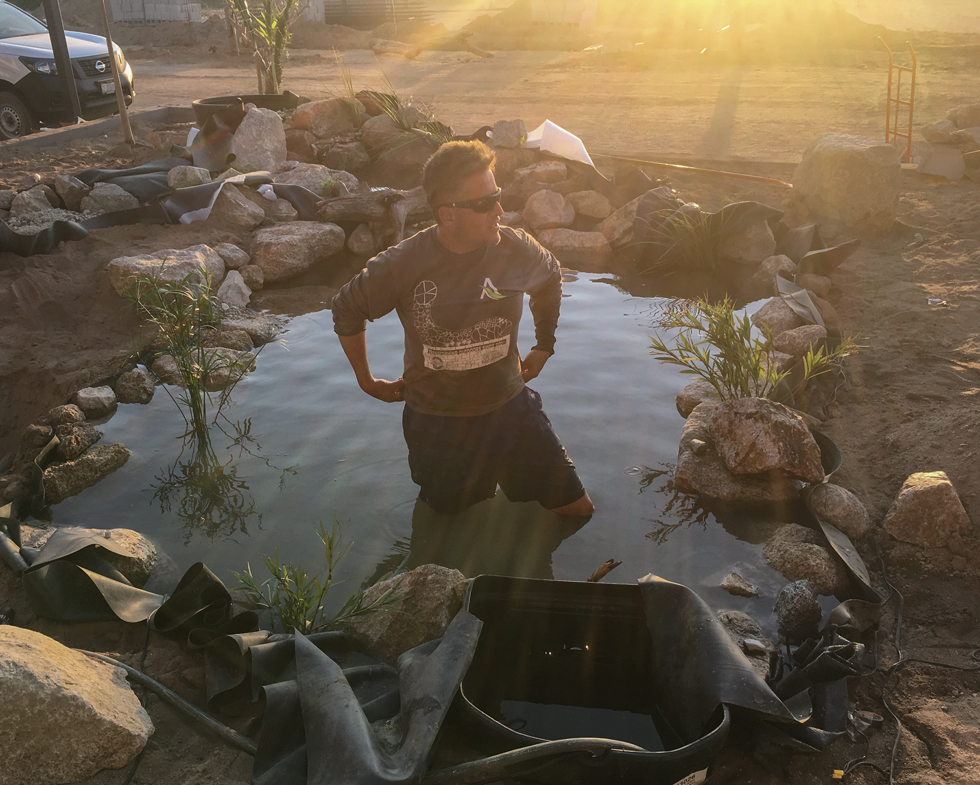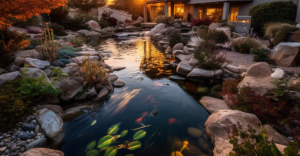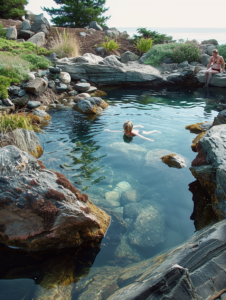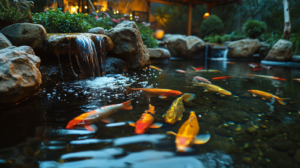When most people think about building a waterfall, the first question they ask is: What type of boulders should we use? After decades of designing and installing koi ponds, recreation ponds, and water features across the Bay Area, I’ve learned that the answer isn’t as straightforward as many imagine.
The truth is — the type of boulder rarely makes or breaks the project. Unless we’re working with very specific design requests or structural challenges, the stone itself is less important than how it’s used. What really defines a waterfall is not the geology of the rock, but the artistry of placement, the balance of shapes, and how it complements the surrounding landscape.
When Boulder Type Matters
There are certain situations where stone type becomes critical:
-
Structural Needs: Heavier, flatter stones for building strong bases or stable ledges.
-
Special Themes: Projects that call for uniform textures, like all granite or all limestone for a specific design style.
-
Local Match: Some clients want stone that mirrors what’s naturally found in their region or property.
In those cases, we hand-select exact boulders for consistency and performance.
Why Artistic Staging Matters More
Most of the time, we approach boulders like an artist chooses colors. Instead of obsessing over a specific type, we focus on color variations, textures, and shapes that create contrast and depth in the finished waterfall.
In fact, some of our best projects start when we simply order a full tri-axle truck of stone and have it delivered to our yard. Once it’s dumped, the creative process begins. We stage, rotate, and study the rocks, letting the waterfall design evolve as we select pieces that “fit” naturally. This method gives us far more freedom and produces features that feel authentic, not forced.
Do We Have a Personal Preference?
That’s a different question — and the answer is yes.
Whenever we get the chance, we love working with Missouri limestone boulders. On certain special projects, we’ve even brought them all the way from Missouri. While this may sound extravagant, the reality is that on large-scale projects, the stone itself doesn’t cost much more than local material. What increases the price is logistics — the transportation adds on average 30–50% more than using local stone.
Even so, we believe the investment is worth it. Missouri limestone has an unmatched natural character:
-
Organic shapes that don’t look quarried or forced
-
Crevices and intrusions that allow water to play beautifully as it flows
-
Texture and color that create depth and realism
Of course, at the end of the day, even the best stone depends on the eye of the builder. The magic lies in recognizing the potential of each boulder and placing it in a way that feels timeless and natural.
Does Boulder Size Affect Price?
Absolutely. Size plays a major role in both cost and logistics.
The reason is simple — larger stones carry much more weight. For example:
-
A 1′ x 1′ x 1′ boulder weighs about 165 pounds on average.
-
A 3′ x 3′ x 3′ boulder weighs about 4,455 pounds (over 2 tons).
That means the larger stone isn’t just three times bigger — it’s 27 times heavier.
Why does this matter for price?
-
Tonnage Costs: Stone is sold by the ton. Scaling up in size multiplies the tonnage quickly.
-
Transport & Equipment: Larger boulders require heavy machinery for loading, unloading, and precise placement.
-
Installation Time: It takes more planning and effort to stage and position massive stones in a way that still looks natural.
-
Installer Experience: The bigger the boulder, the more knowledge and skill it takes to install correctly. Protecting the liner, distributing the weight properly, and locking the rock in place without shifting are all details that come only with years of hands-on experience.
In other words, size doesn’t just increase material and equipment costs — it raises the importance of working with a builder who truly understands how to handle stone at scale. When done right, larger boulders provide the “anchoring effect” that makes a waterfall feel authentic and permanent.
The Role of Experience
After building countless water features, I’ve found that the magic doesn’t come from the quarry but from the installer’s eye. Boulder selection is about knowing how to balance size, direct water flow, and create focal points — all while making the final design look like it’s always been part of the landscape.
That’s where true craftsmanship shows itself: a waterfall should feel natural, even if it’s entirely man-made.
Bottom Line: When choosing boulders, don’t get stuck on names or categories. What matters most is the artistic vision, the staging process, and the experience of the builder shaping them into a flowless water feature.






